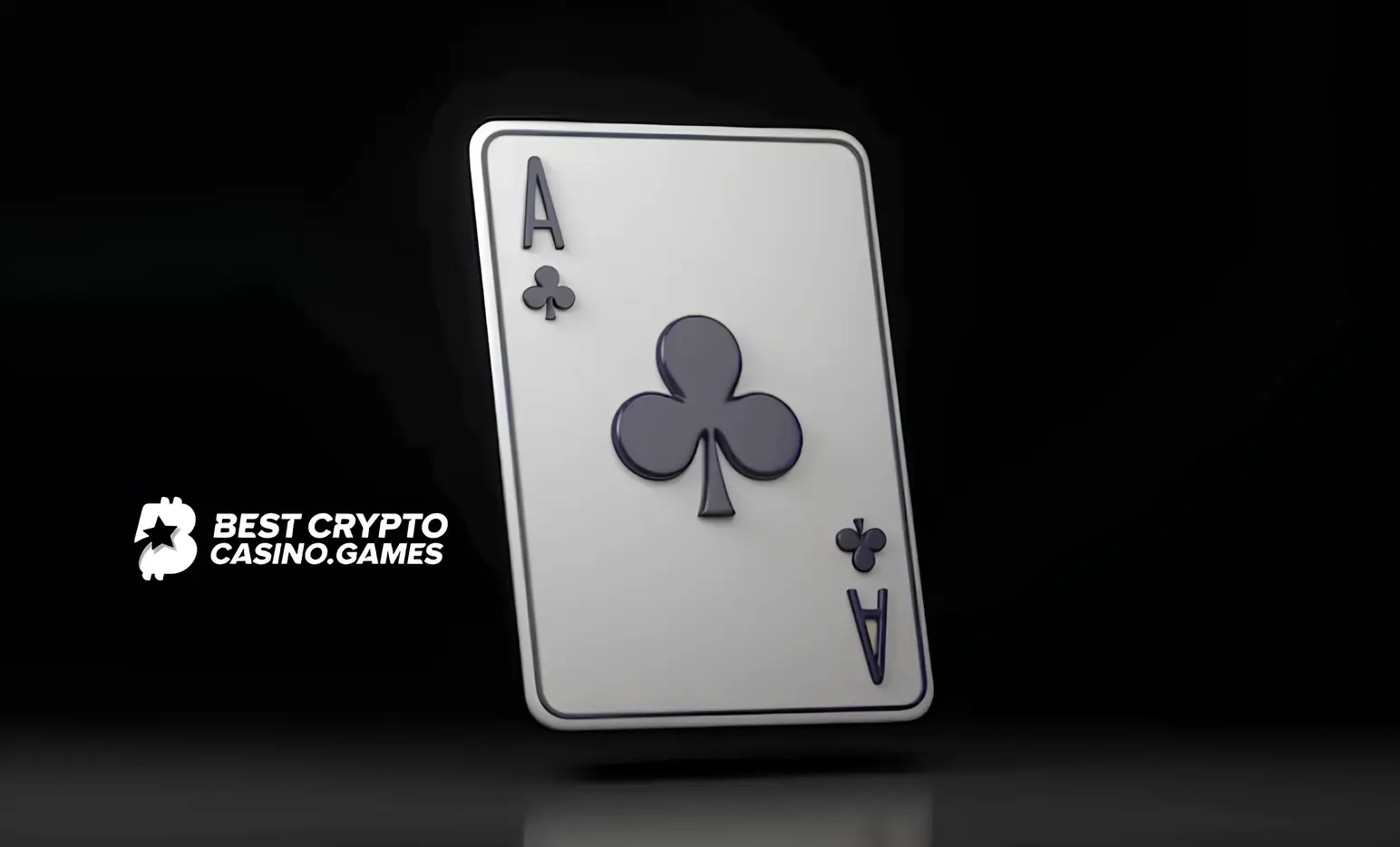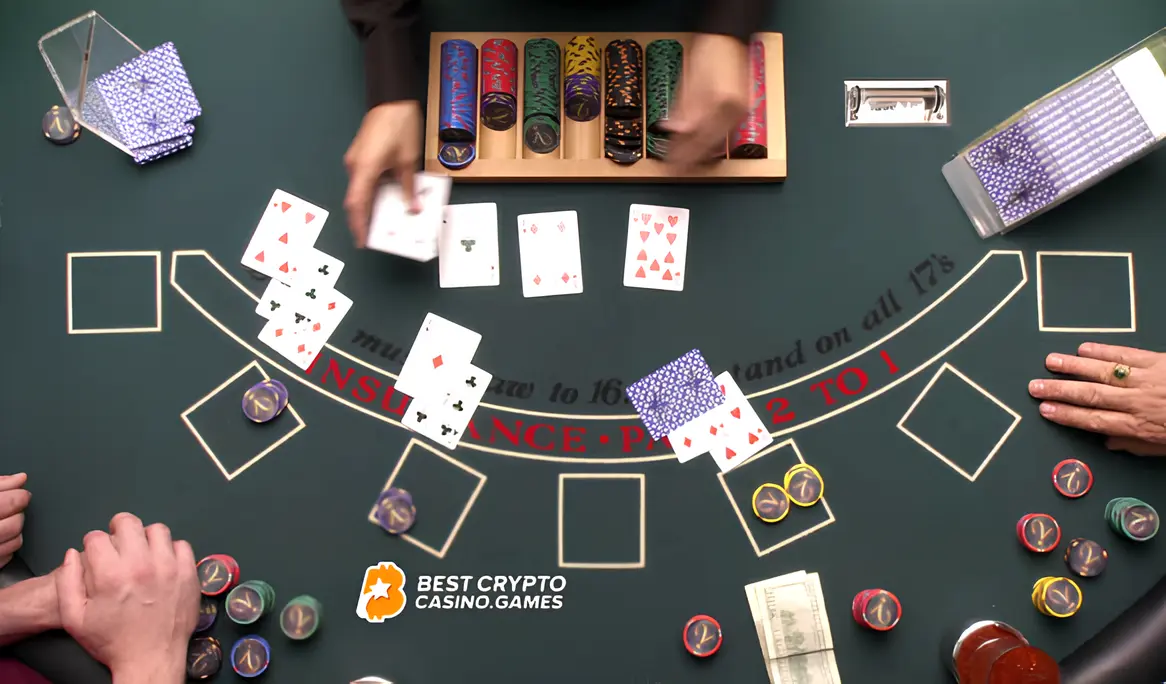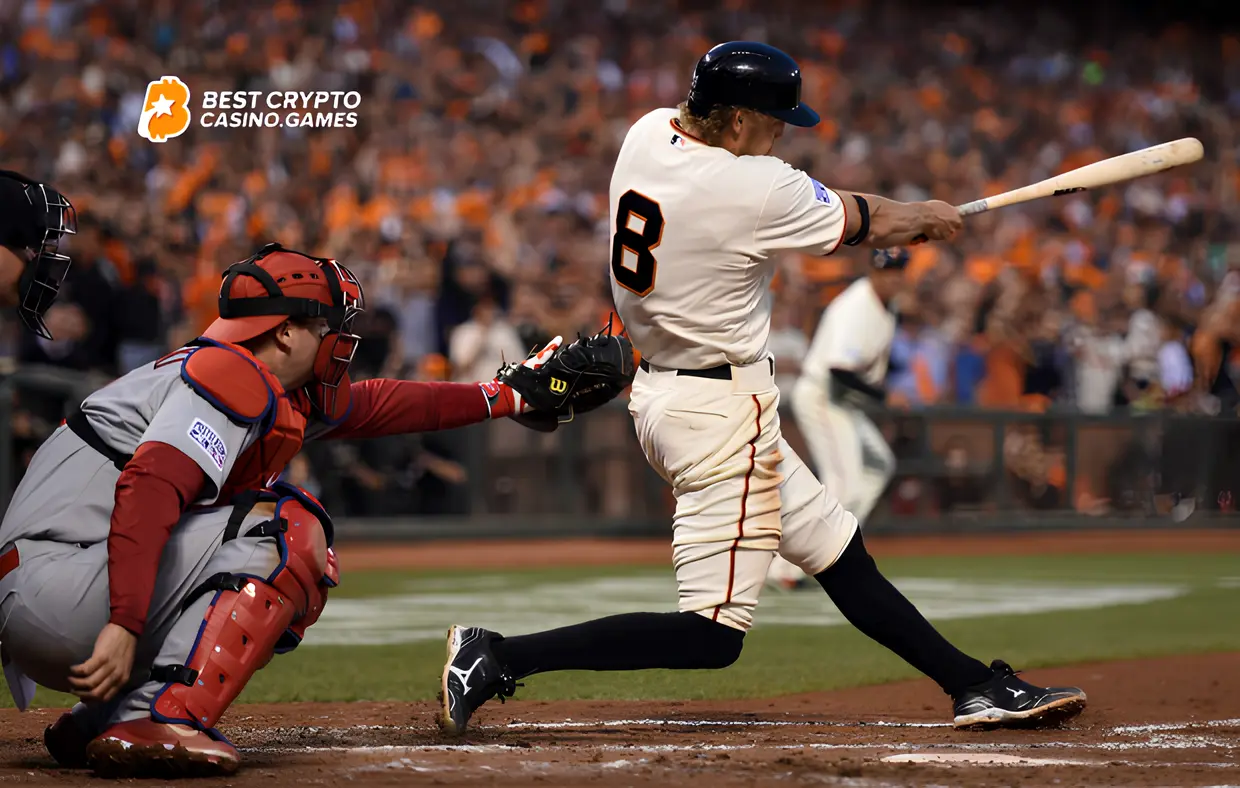What is the Right Time to Hit or Stand in Blackjack?

In Blackjack, the aim is to achieve a hand closer to 21 than the dealer’s without going over.
Determining when to hit or stand in blackjack can be pivotal to mastering this captivating game. In the realm of Best Crypto Casino Games, Blackjack stands as a strategic venture. So, how do you navigate the labyrinth of choices? Assessing when you should hit in blackjack, especially on challenging totals like 12, can reinforce your likelihood of success. The key lies in balancing risk and opportunity to optimize your outcome while exploring the invigorating world of crypto live casino games and blockchain casino table games.
Key Factors to Consider
Understanding strategy elevates your gameplay experience.
When discerning when to hit or stand in blackjack, several facets require attention. The first element to grasp is the basic strategy of blackjack, which dictates an optimal course of action for every hand based on the player’s cards and the dealer’s visible card. Additionally, knowing when should you hit in blackjack is a crucial aspect of mastering the game and can significantly influence your winning odds.
The dealer’s rules also impact decisions.
For instance, becoming familiar with the dealer’s constraints — specifically when does the dealer stop hitting in blackjack — empowers you to tailor your strategy accordingly. Understanding the ceiling, such as how many times can the dealer hit in blackjack and when does dealer stand in blackjack, helps you anticipate potential outcomes.
As more people engage with blockchain casino table games, the synergy of traditional strategies with modern techniques offers unprecedented opportunities for growth. Embracing these insights ensures an ever-evolving mastery of when to hit or stand in blackjack for future gameplay excellence.
When Should You Hit in Blackjack?
Understanding the optimal moments to strike is fundamental to the essence of blackjack. It’s not just luck.
Seasoned blackjack, a renowned casino strategy expert, described how important it is for players to not only learn the game’s rules but the dealer’s tendencies. Mastering both aspects will elevate your gameplay significantly.
You should hit in blackjack when your hand is low, and the odds of improving it are better than the risk of going bust, typically with a total of 11 or less, or when the dealer shows a strong card (7 or higher) and your hand is weaker. This ensures there’s an opportunity for improvement without the risk of busting. Always reassess the dealer’s visible card.
Beyond the numbers on the table, remember that knowing blackjack tips when to hit strategically is key; standing firm when advantageous and striking faster than your opponents shapes your path.
Harnessing these skills can guide your blackjack journey, seamlessly blending old and new strategies with the excitement of crypto live casino games.
When Should You Stand in Blackjack?
In blackjack, knowing the right moment to stand can significantly impact the outcome of the game. It involves astutely assessing your current hand against the dealer’s potential hand.
A common rule of thumb is to stand when your hand totals 17 or more. These hands typically pose a less risky chance.
Interestingly, when the dealer shows an upcard valued between 2 and 6, a player holding 12 to 16 might consider standing.
This decision forms part of basic strategy, capitalizing on the dealer’s vulnerability, increasing the odds in your favor.
While there are basic strategic rules on how many times can you hit in blackjack, judgment plays a crucial role. Evaluating the dealer’s position helps you decide your moves and determine when to hold in blackjack.
Ultimately, the art of knowing when to stand strengthens your gameplay. By mastering when the dealer stands in blackjack, you optimize your strategy and make informed choices.
Players must understand which hands necessitate halting further action.
In many instances, especially with hard totals showing value near a winning number like 20, the decision to hold aligns with skillful patience, strategy, and the likelihood of favorable outcomes.
Frequently, the optimal decision to hold emerges when you have a sum that is a quantum of relative strength such as an 18 or higher total. It is wise to halt attempts at increasing your hand value, especially if you’re poised against a dealer’s lesser card total. In these situations, refraining from taking a blackjack hit card can avert the pitfall of a bust, maximizing your opportunity to clinch victory.
Should You Hit on 12 in Blackjack?
Deciding on a 12 can be perplexing.
Understanding blackjack rules hit or stand is crucial when faced with a hand totaling 12. The most common scenario occurs when the dealer’s upcard is strong, prompting the player to hit. Alternatively, when the dealer’s upcard is weak, such as a 4, 5, or 6, this could be when to not hit in blackjack. Strategically, this taps into potential dealer bust opportunities.
This demands careful consideration and calculated risk.
Knowing when should you stop hitting in blackjack is pivotal. Trusting in the mathematics of probability, while also being aware of dealer dynamics – knowing in blackjack what is the lowest number the dealer does not hit on – you cultivate an intellectually sound, number-centric approach.
In essence, hitting on a 12 can be a double-edged sword, presenting opportunities and risks alike.
When to Not Hit in Blackjack Principles
Timing is everything in blackjack.
Knowing the precise moments when to refrain from hitting can make all the difference. This nuance is integral to mastering the delicate dance of blackjack strategy, allowing players to leverage their positions effectively. For instance, when your hand totals 17 or higher, statistically, the odds of improving your hand are minimal. Thus, it becomes a wise strategy to stand.
Equipped with this knowledge, adjust your moves accordingly.
Resist the urge to hit when holding hard 12–16, especially against a dealer’s weak upcard like 4, 5, or 6—this means banking on potential dealer busts rather than chasing slim improvements.
Mastering the timing of your decisions enhances your gaming experience and can significantly impact your winning potential.
Rules on Dealer Hits and Stands
In the intricate game of Blackjack, understanding the dealer’s hitting and standing rules is pivotal, as these rules determine when the dealer will halt.
The dealer stands once their total reaches 17 or higher.
However, there is a fascinating nuance within different casinos regarding whether the dealer must stand on a soft 17, often introducing a strategic layer affecting the gameplay, probabilities, and outcomes of each round.
If you comprehend the thresholds, particularly in blackjack what is the lowest number the dealer does not hit on, you can forecast potential game outcomes, allowing an opportunity to exploit dealer vulnerabilities. With this knowledge, players who remain vigilant can “read” the game and adjust their tactics to capitalize on potential advantages.
When Does the Dealer Stop Hitting in Blackjack?
In blackjack, the dealer has specific rules, ensuring that their actions are more predictable and less influenced by personal strategy.
Typically, the dealer must continue drawing cards until reaching a mandatory threshold, known as the “dealer stand” rule, markedly when that score hits 17 or higher. Crucially, this is irrespective of whether the total is a soft or hard 17, depending on the casino’s rules, which can affect the outcome.
Consequently, dealer actions are a critical component of a player’s strategy.
Blackjack Tips for Better Decisions
To enhance your decision-making skills at a crypto live casino games table, it’s crucial to balance statistical knowledge with intuition.
For instance, knowing when should you stand in blackjack is integral on hands like 17 and above, where the risk of busting is high. Meanwhile, understanding how many times can you hit in blackjack allows you to stay in the game without overextending your bet or succumbing to impulsive choices.
Ultimately, refining your decisions is about knowledge commitment and adaptive strategy. By recognizing in blackjack what is the lowest number the dealer does not hit on, you can anticipate when the dealer will be compelled to stand, typically when they reach 17 or higher according to blackjack rules hit or stand. Armed with these insights at blockchain casino table games, you bolster your decision-making finesse, fostering confidence and reaping rewarding gains.



